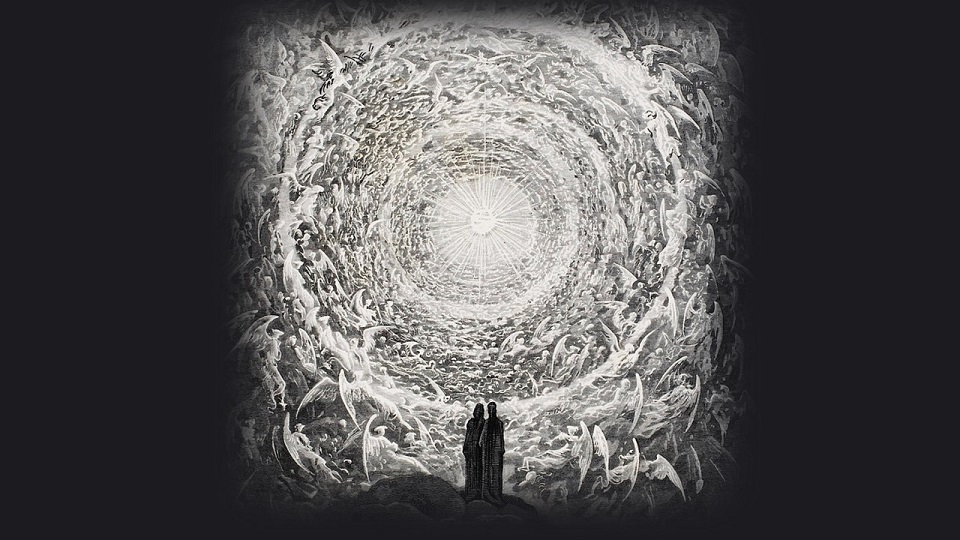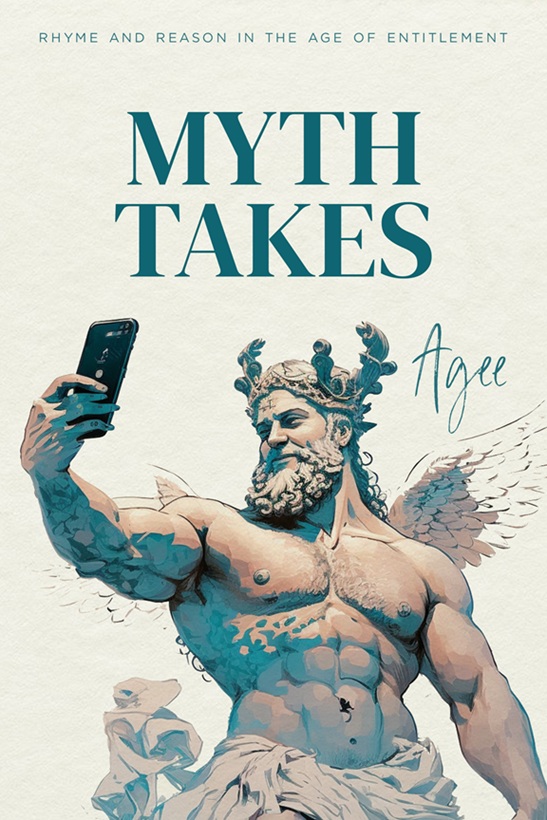.
Circles
It seems to me that living comes in circles,
That nothing, even this, is ever new,
That all that we create is a stale rhyme,
A now that cannot cover marks of then.
It seems to me that every extant thought
Comes back again, as sure as fall to spring.
And yet, as winter warms and turns to spring,
And spring to summer, autumn, tracing circles—
Despite, in February, that I thought
That winter had at last killed all life new—
I find that, somehow, now, as sure as then,
I take delight in all the dusty rhyme.
Perhaps it’s that I recognize in rhyme
The sound in fall of sweet birdsong of spring,
Which, though not now, will be as it was then.
A comfort lives embedded in these circles
Which take the joys of old and joys of new
And bear a double joy all in one thought.
But still, I wonder whether this my thought
Is really mine alone, or is my rhyme,
Like rhyming “truth” with “truth,” not one bit new
But common as the yearly bloom of spring?
Can any effort free us from these circles,
Or will our nows be ever ghosts of then?
No need to labor over living, then,
If in our strivings we naively thought
That these worn tracks we trod were novel circles.
No need to suffer, searching for the rhyme
That, though we pray and yearn for it to spring
Fresh from our minds, will never spring forth new.
And yet I still come back—as if it’s new,
As fresh and green and living now as then,
As welcome and as welcoming as spring—
To one recurring, still persisting thought:
What matter that I plagiarize this rhyme
If simply to delight in spinning circles?
And then, with perfect constancy, my thought
Returns, like spring birds, back to that old rhyme,
Forever living, ever new, in circles.
.
.
Jack DesBois is a singer, actor, and storyteller. He gives annual Epiphany season performances of “The Western Star,” which he wrote in 2016. He self-published a chapbook of short poems in 2018. As a singer, Jack has had the good fortune to solo in several of the great works of Baroque Oratorio, including Handel’s Messiah (Bass) and Esther (Haman) and J.S. Bach’s St. John Passion (Jesus). Jack lives in Topsfield, Massachusetts.















Impressive Sestina in that it seems as natural
as conversation or thought, not an easy thing
to accomplish in a form that does not encourage
natural flow (IMO).
It’s been a very long time since I’ve been immersed
in grammar, but I do wonder, in the third strophe,
if “take” and “bear” shouldn’t be singular because
“comfort” is singular.
Enjoyed reading your poem, Jack.
Thank you, JD! In the third stanza my intention was for the circles (rather than the comfort) to do the taking and bearing. I do need a comma after that “circles,” though.
The sestina strikes me as an inescapably cyclical form. Choosing the circle theme allowed me to let the form serve the sentiment, rather than fighting against it, which I think helped keep the flow more natural.
Very impressive indeed, Mr. DesBoise. Because of the plurals you noted, jd, I took the “Which” in III.5 to refer to “circles” rather than “comfort.” Although the latter may seem a more natural antecedent, I think the use of the former in II makes it a plausible candidate. Maybe “Great comforts” could be substituted for “A comfort,” but that alternative is less natural.
Another niggle, for me, is the repetition of “Which,” at III.3/5: could either of these be made “That”?
Thank you, Julian. I see what you mean about the two whiches (it might have worked if I had followed Shakespeare’s lead and made it three). I think it might work well to change the “Which” in line 5 to “That” — which could also help clarify its pointing immediately back to “circles” in line 4 (with no comma between the two words).
Learn the difference between restrictive and non-restrictive clauses, and the which/that dilemma disappears.
That’s the heart of the issue, C.B. I think my clause “Which take the joys of old and joys of new” was a bit sloppy; I didn’t have a clear idea of whether it should be restrictive or non-restrictive (it could be grammatically correct either way), and as a result, I ended up with an ungrammatical hybrid with the “no-comma-which” construction. I’ll have to think some more about how best to fix it.
Thank you, C.B. and others — these sorts of comments about English usage are one thing I enjoy about SCP. They help keep all of us poets honest.
…I’m now leaning toward non-restrictive, so in goes the comma after “circles.”
Jack,
This is great. I think this is one of better poems I’ve seen here recently.
You took a seemingly simple theme of cycles, the cycle of life, cycles of rhyme, and created a genuinely new metaphorical idea about the nature of rhyme and life, and the relationship between the new and the old. The irony is all your talk of circles and repetition became a metaphor for something new. The new and the old collided and yielded something original, as it always does in the hands of an original artist or thinker.
Great job!
Thank you, David. I must have hit the mark on this one. One could distill the work of an artist into two steps: (1) selecting disparate influences in the extant world, and (2) fashioning them into something that didn’t exist before. When the influences and the product are both true and both meaningful to the beholder, the artwork works. I wasn’t sure if I had managed (2) with this poem, but I’m glad you thought I did.
One of my influences here, I think, was a historian who wrote that to say history repeats itself is a dangerous oversimplification of the subtle patterns of history. Another influence was the church liturgical cycle and its synchronicity with the seasons. A third was Pooh and Piglet following tracks in the snow…
One last thought – another perspective on art is that it is the pursuit of truth. The truth is the truth, so the heart of any true work of art is never going be original. Insofar as it is a true work of art, its heart will be pointing to the eternal truth that was and is and ever shall be.